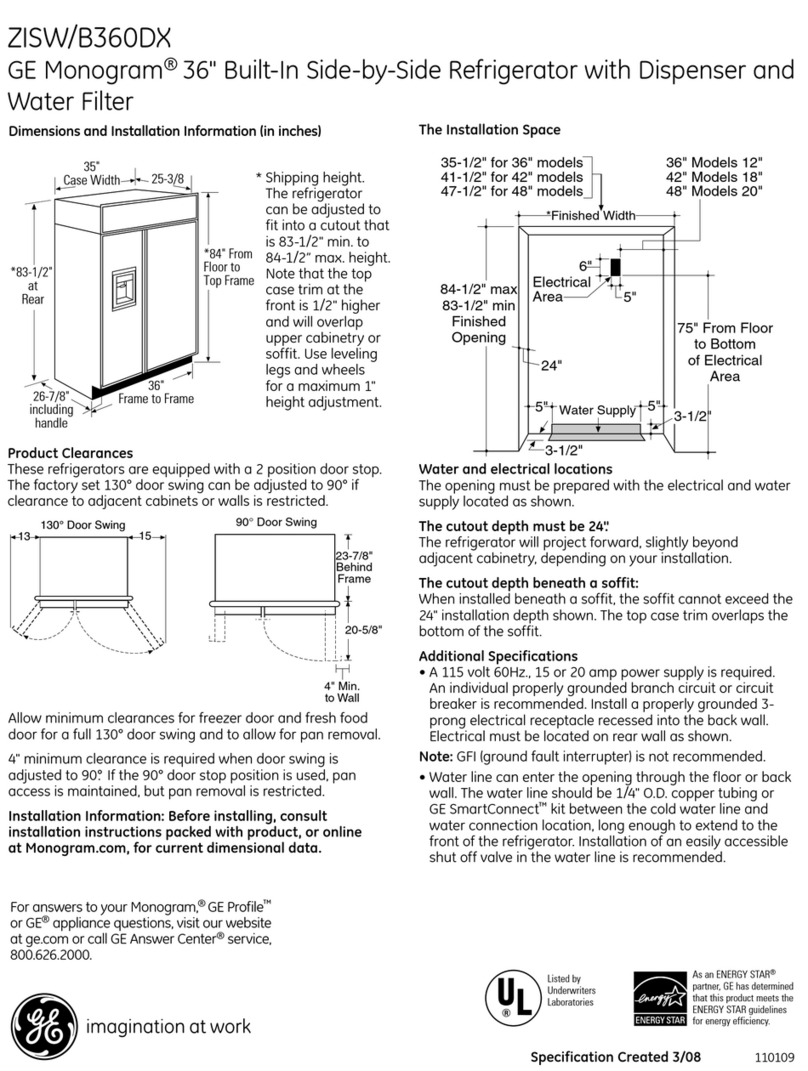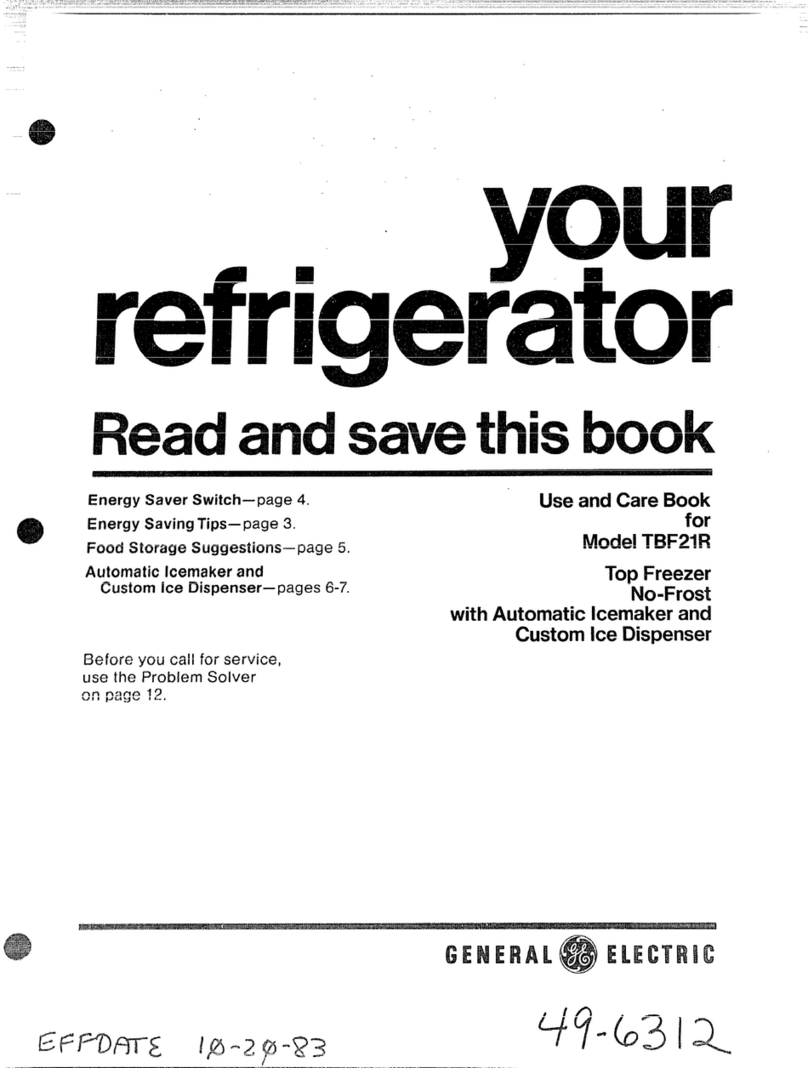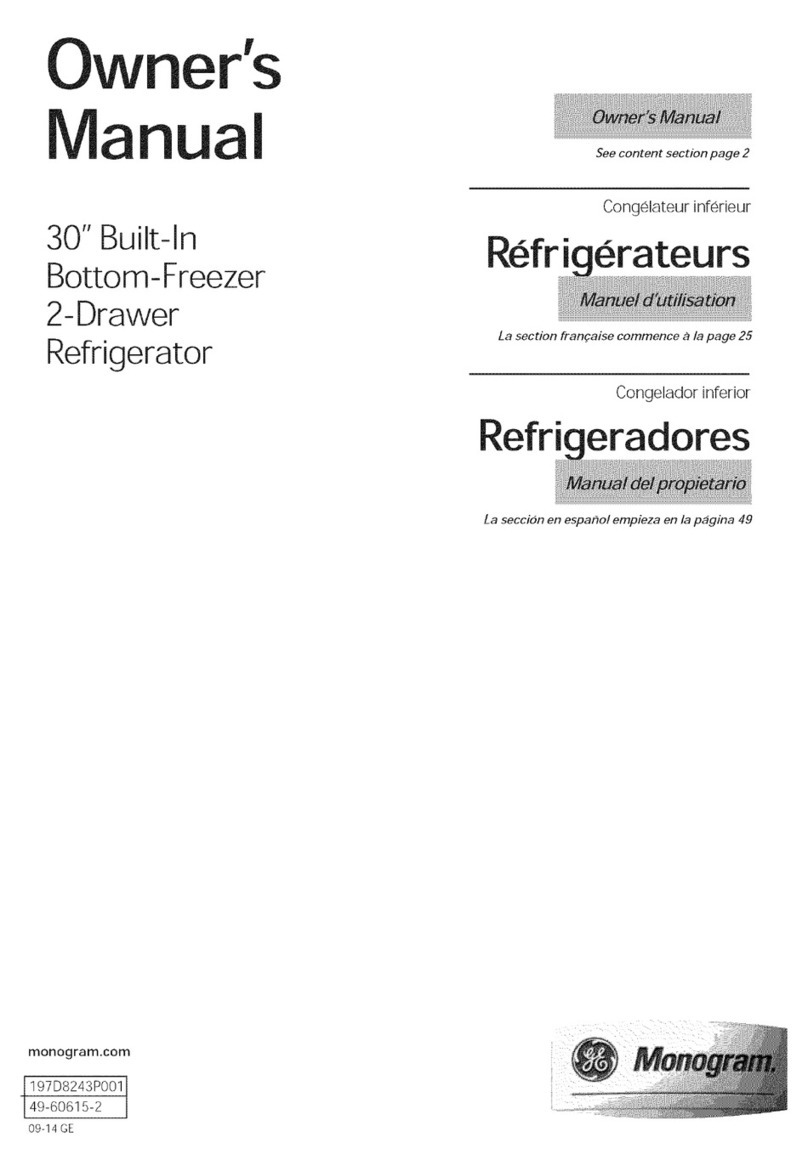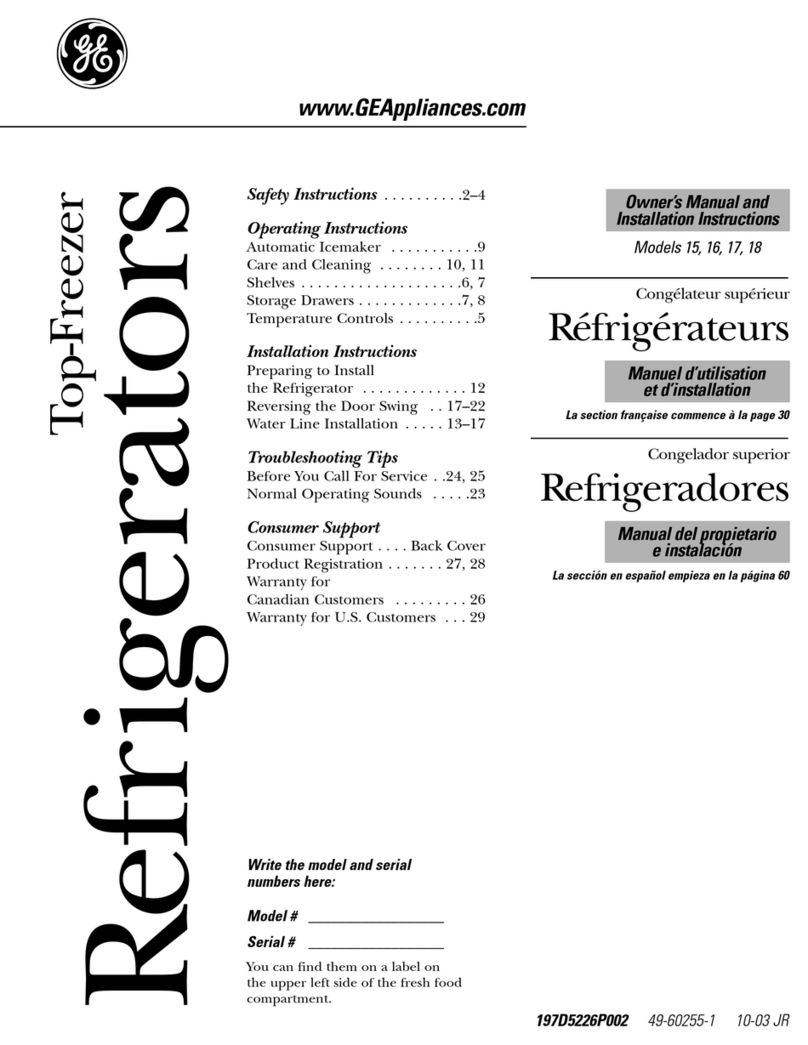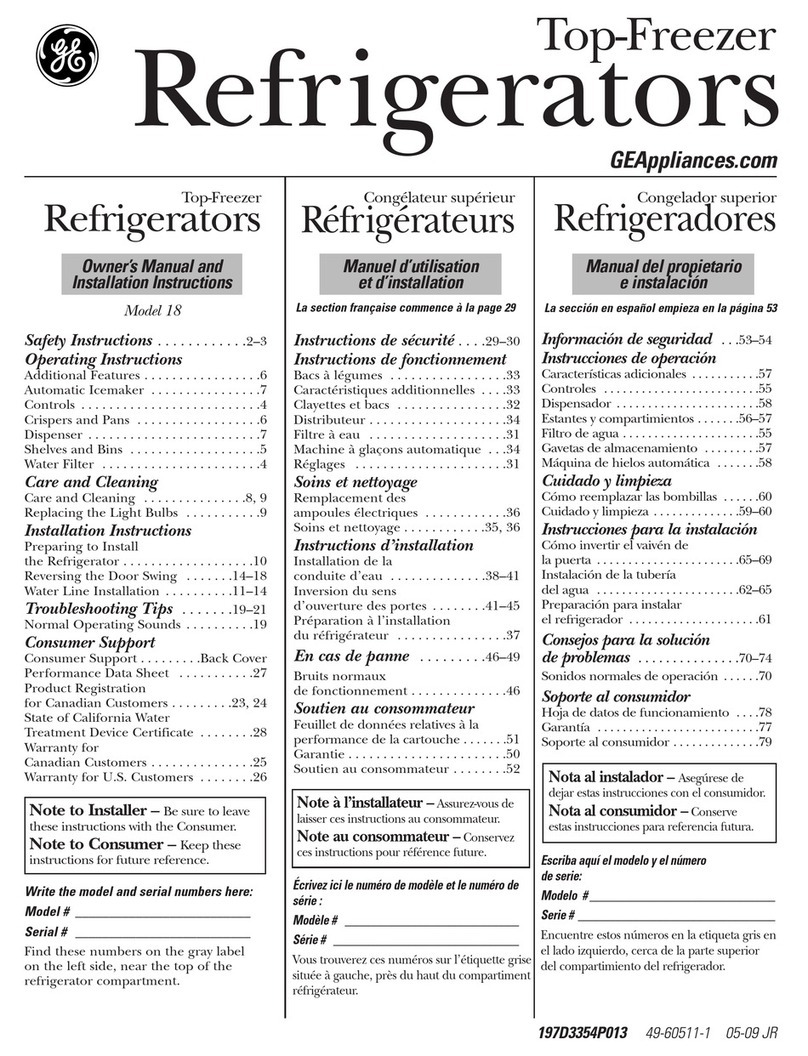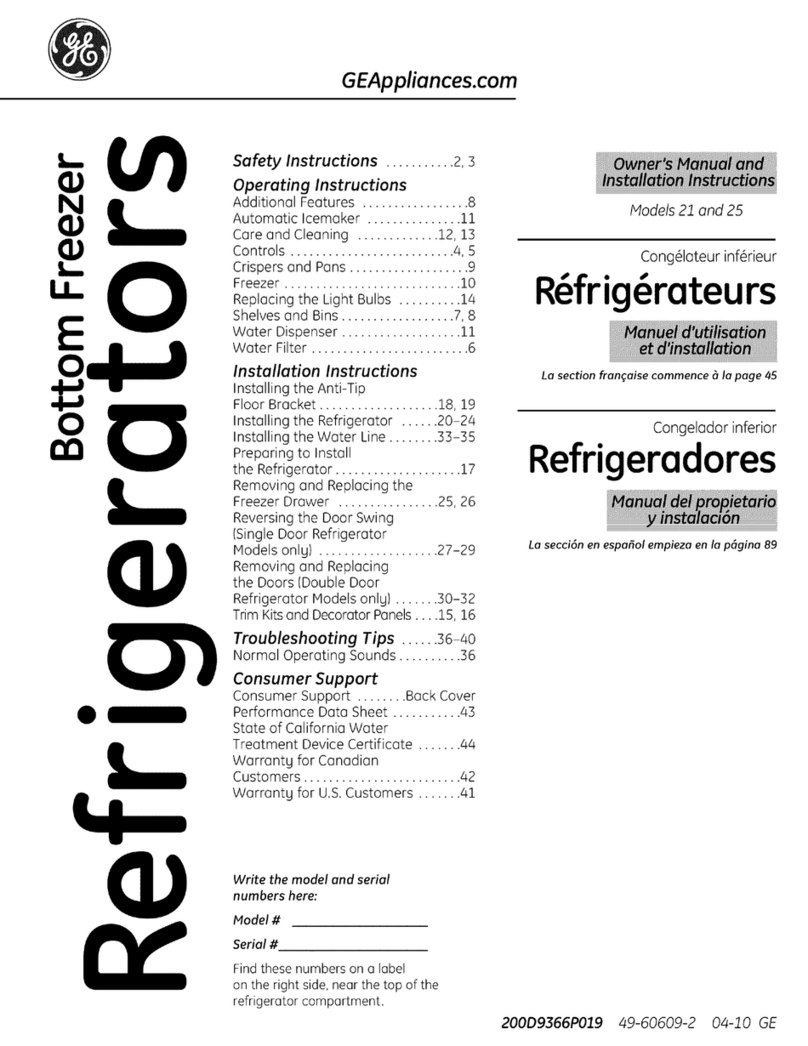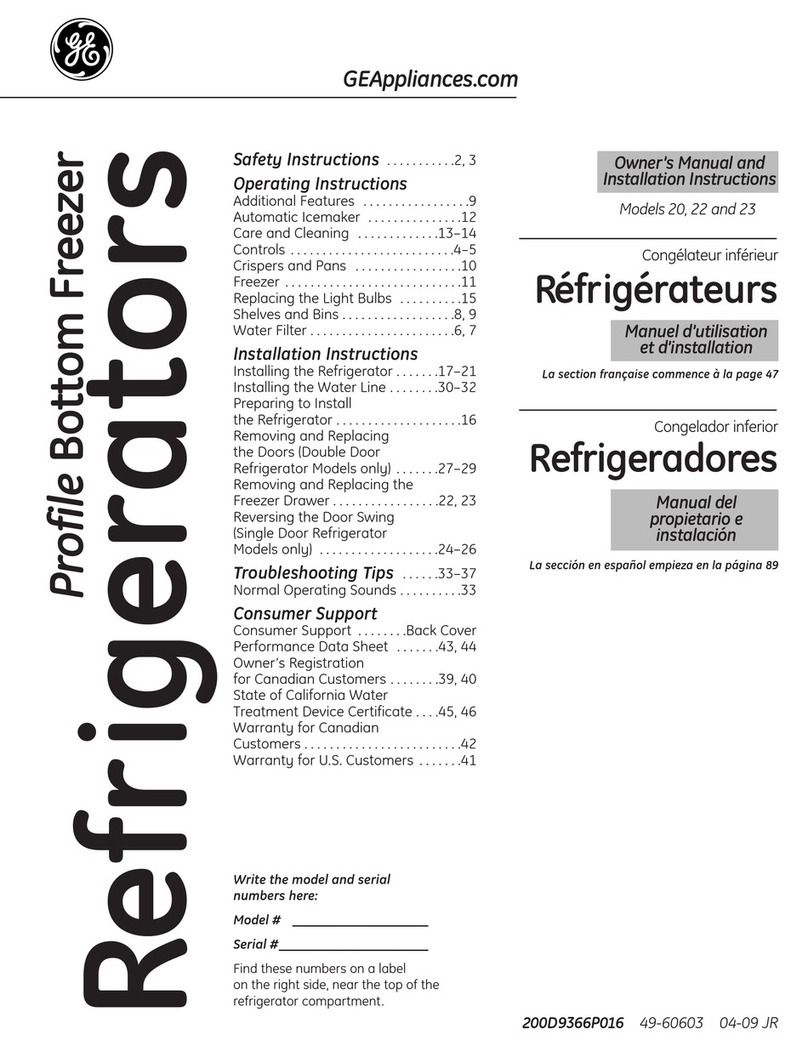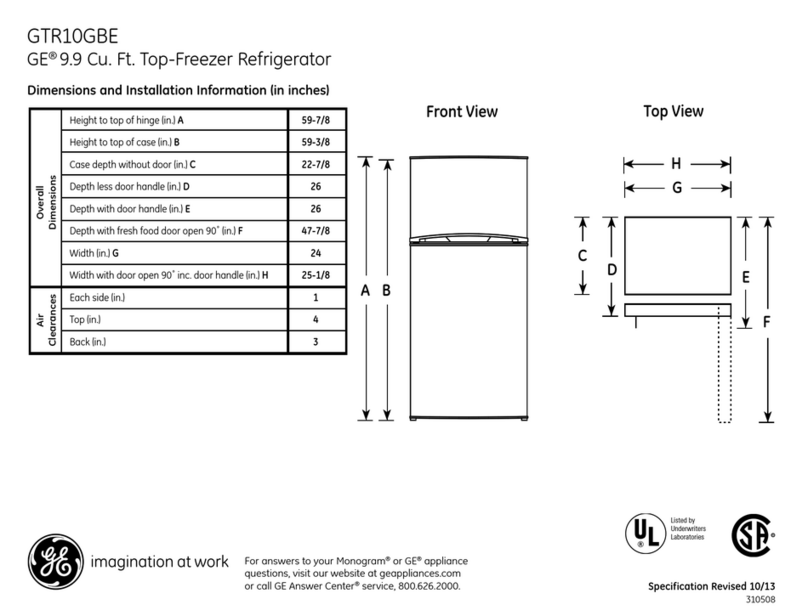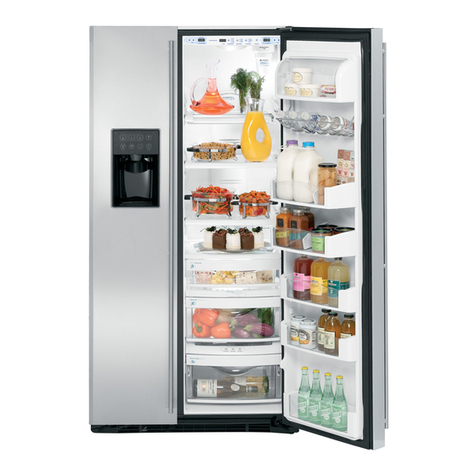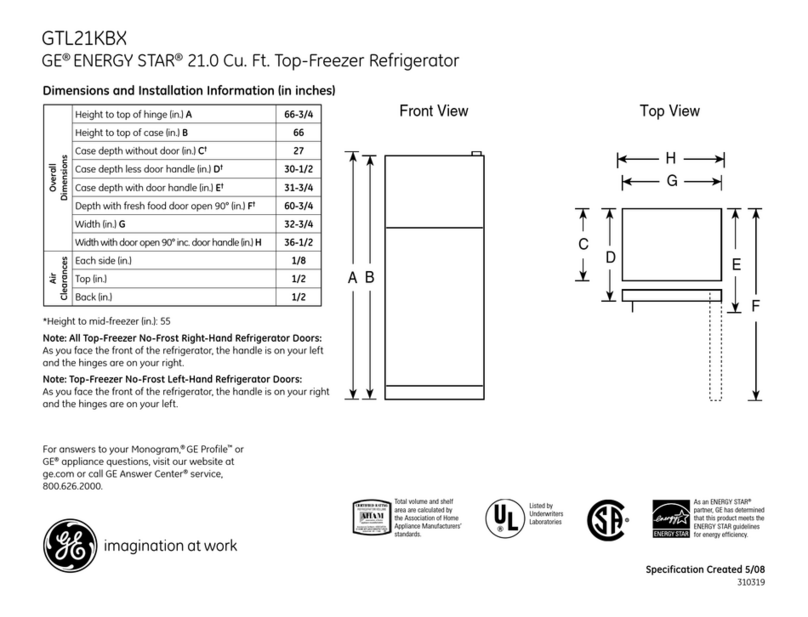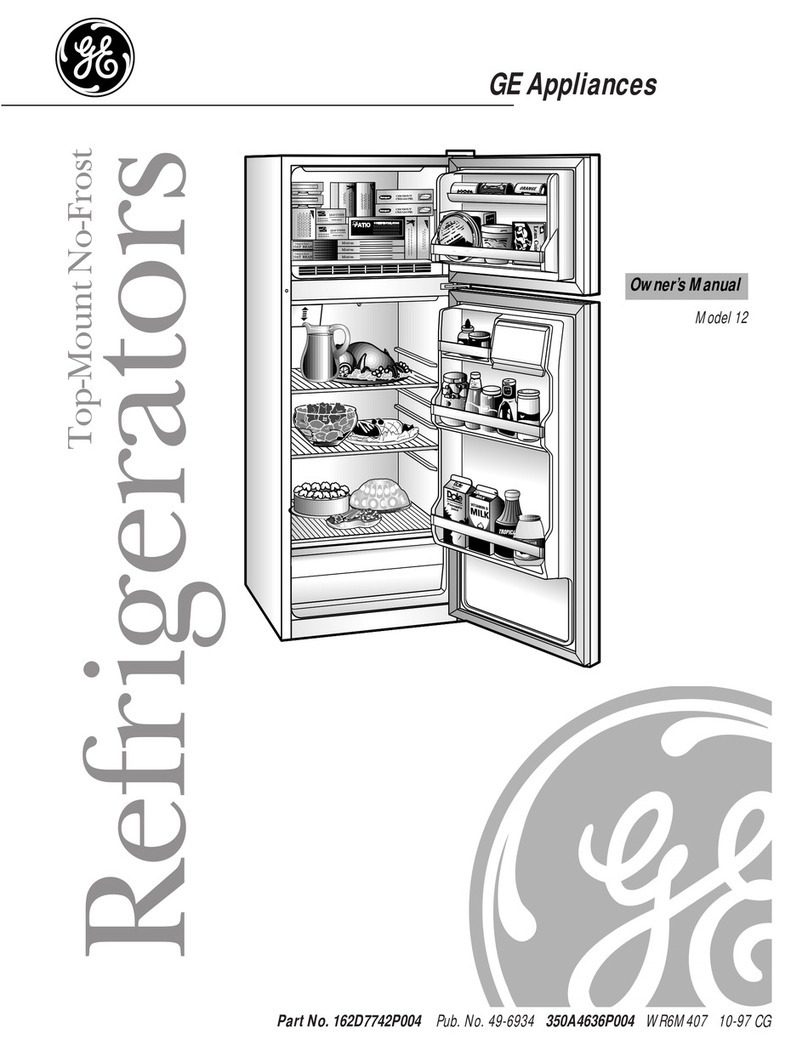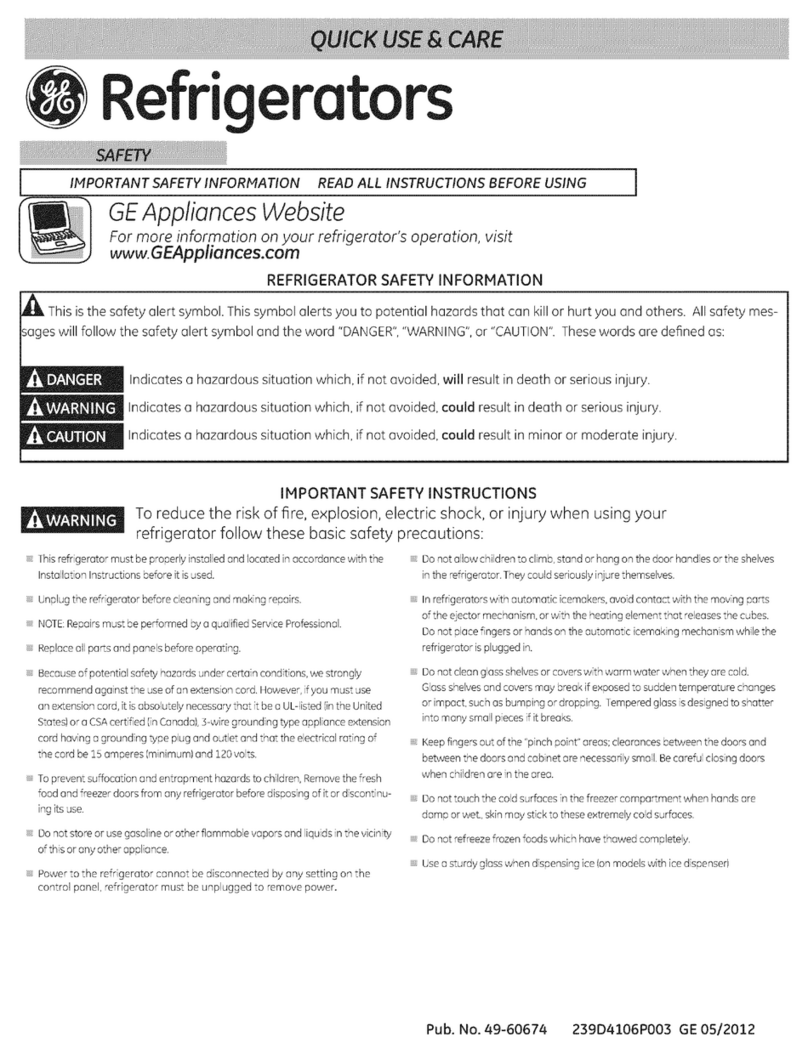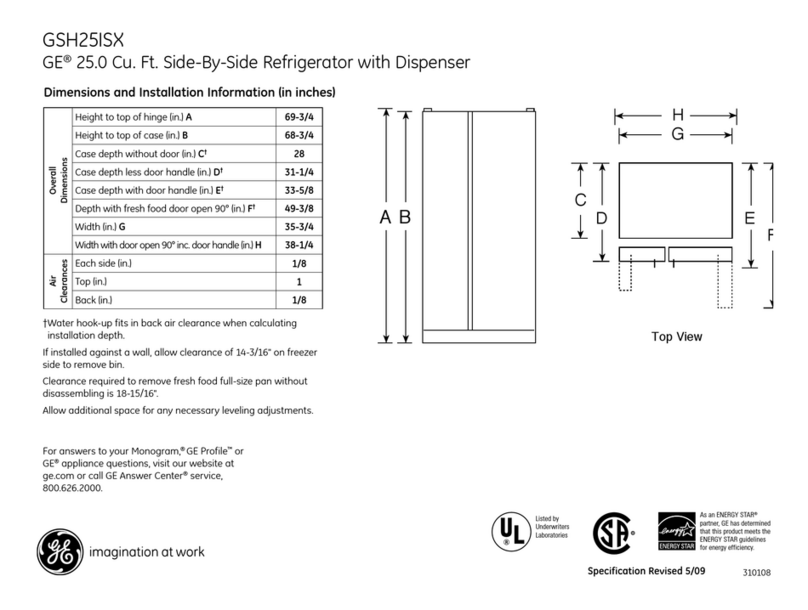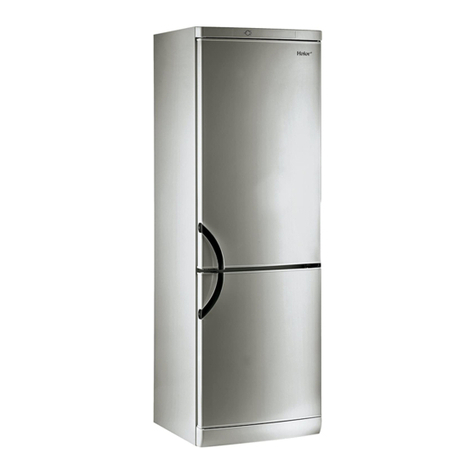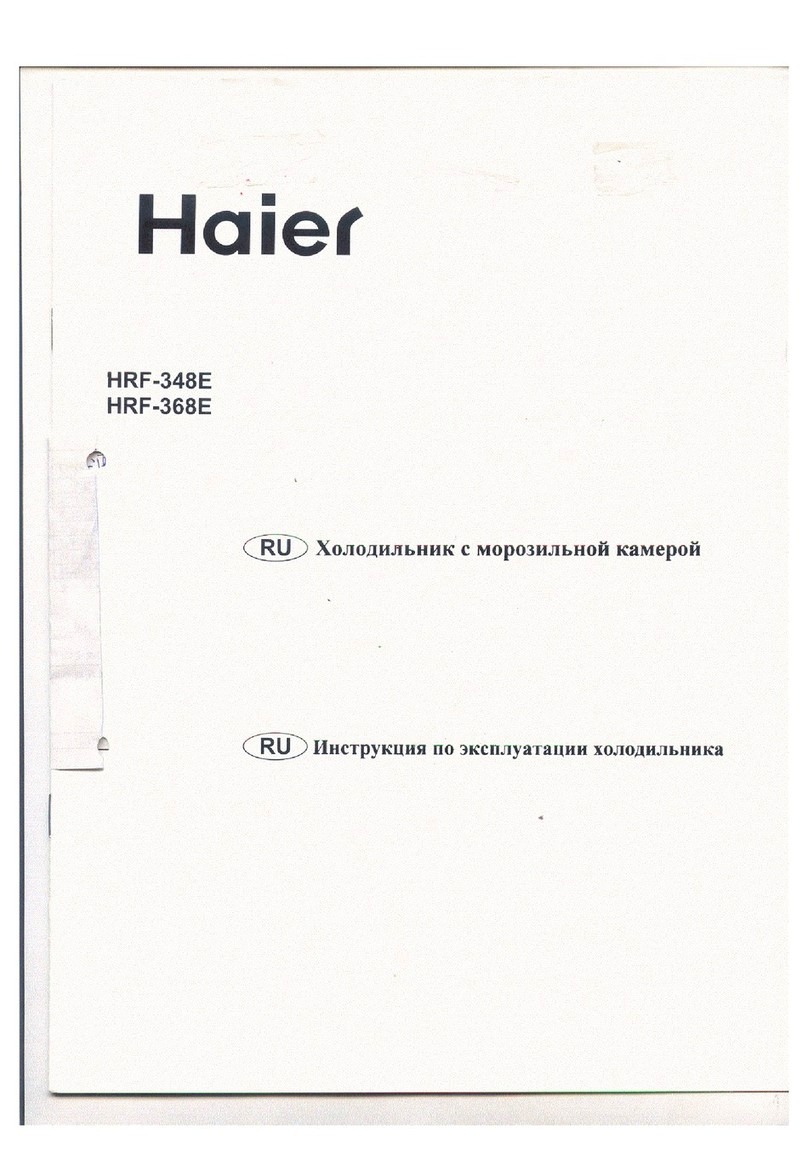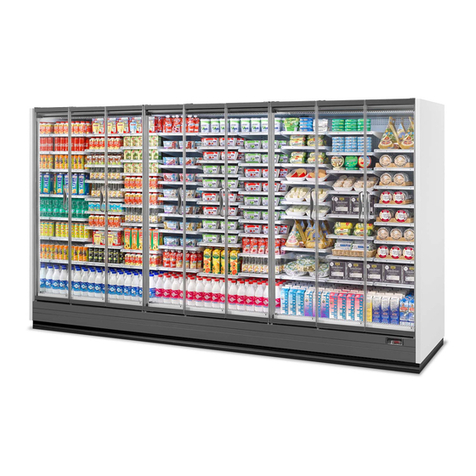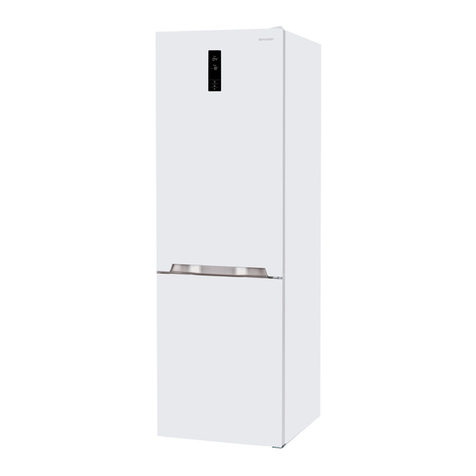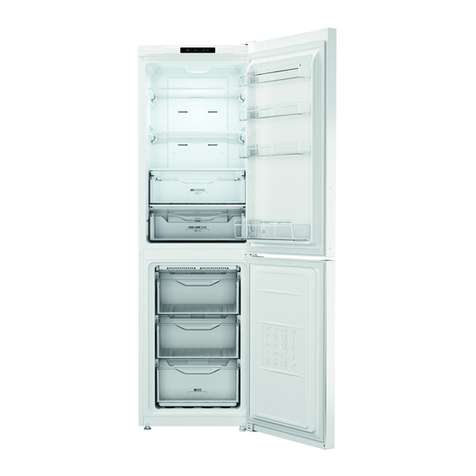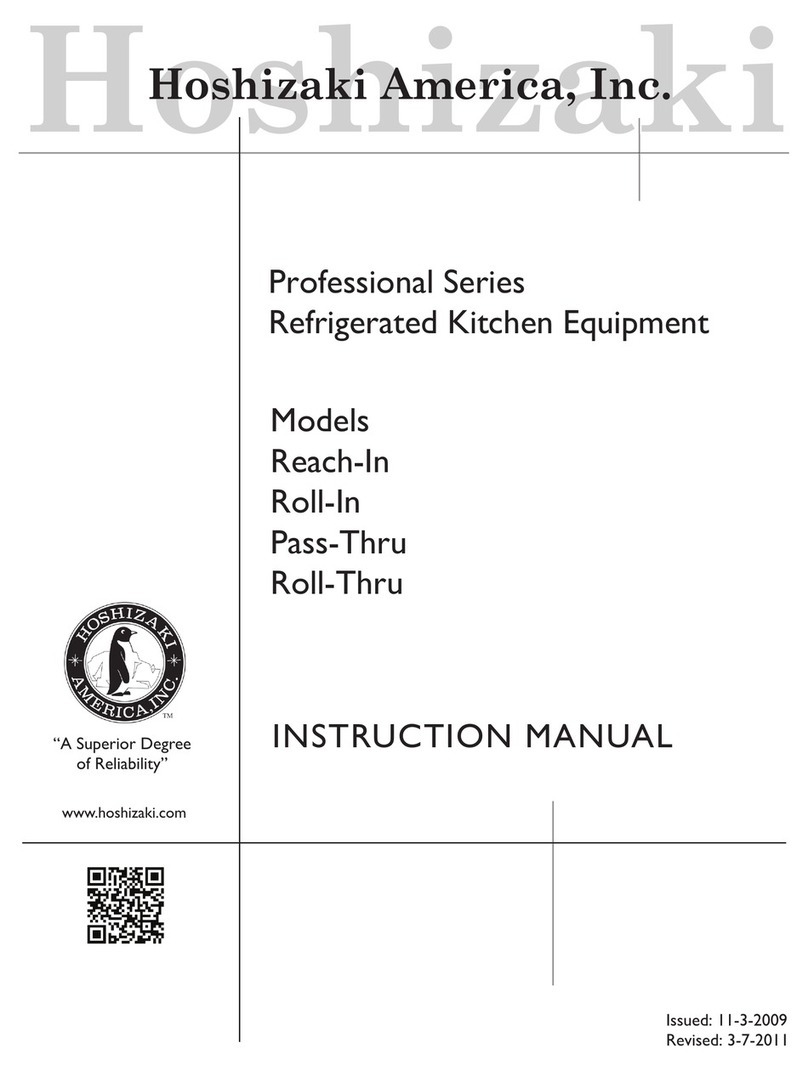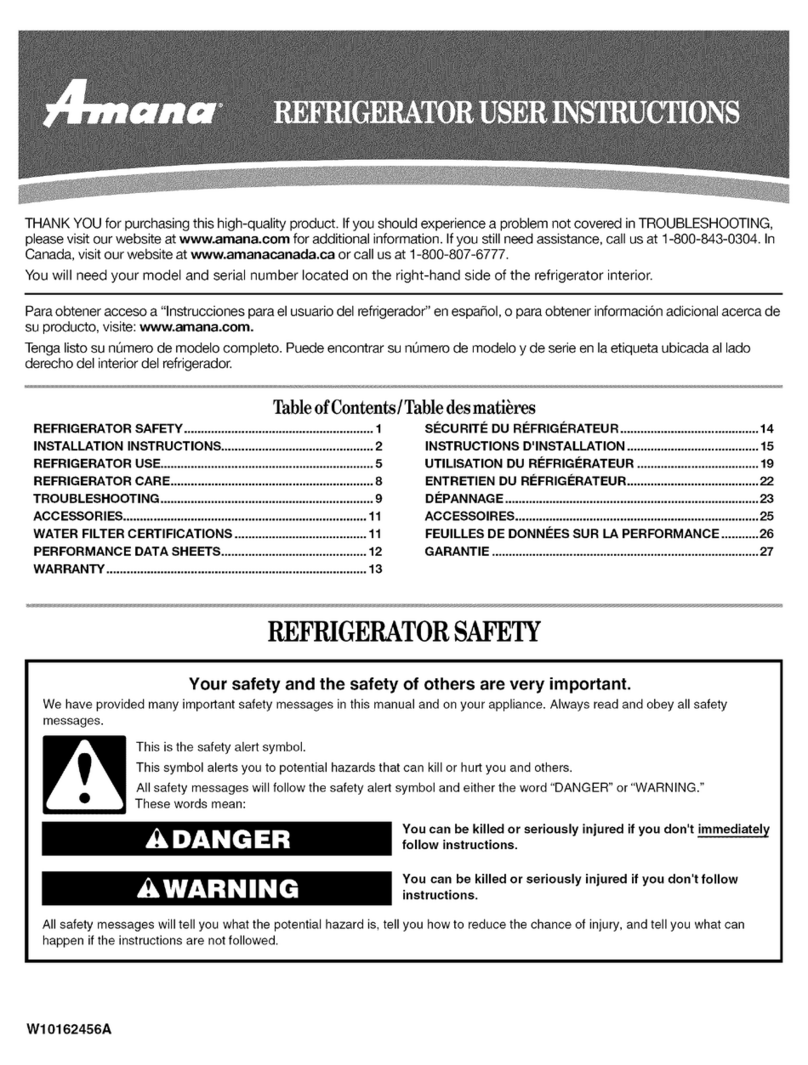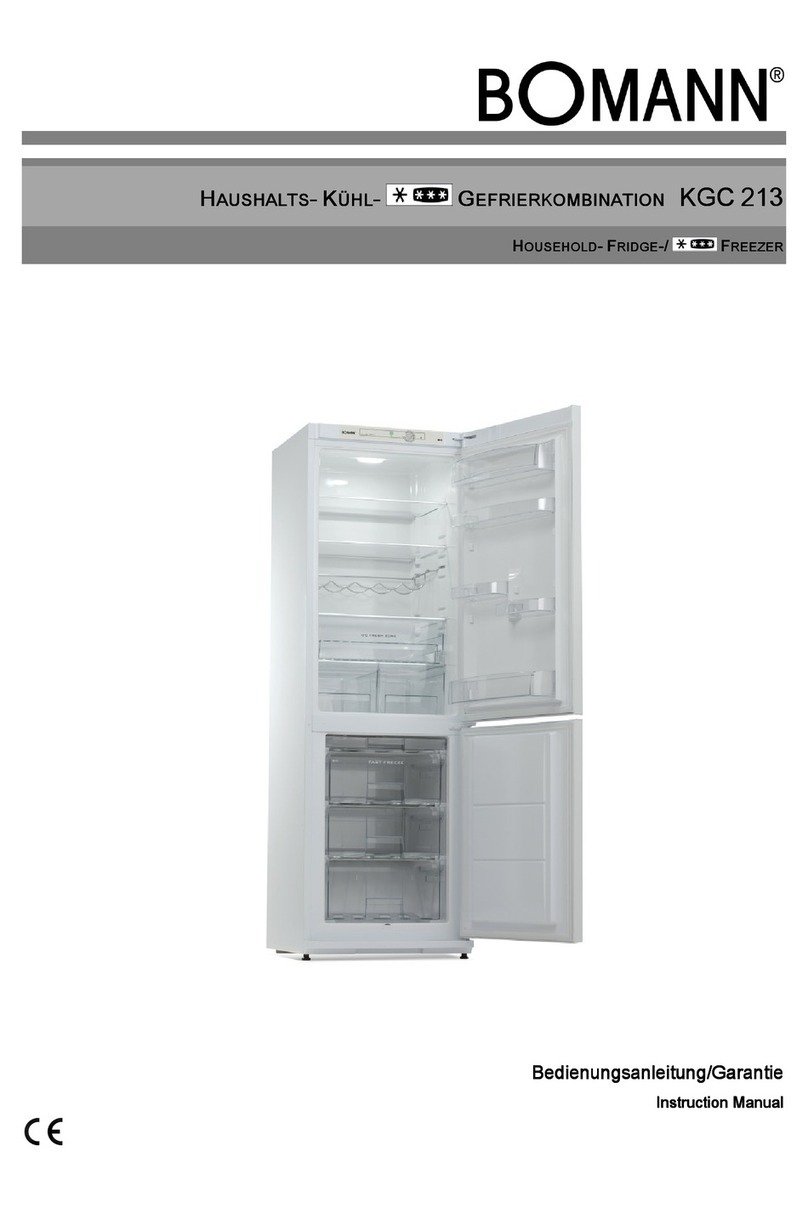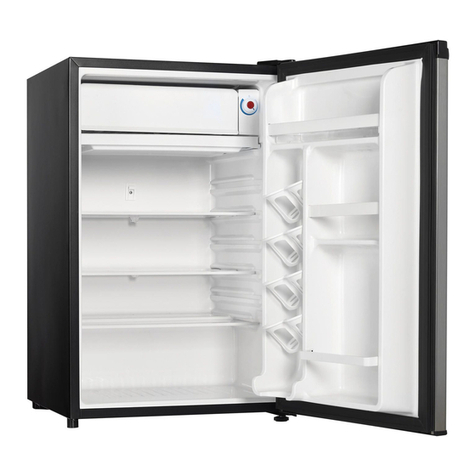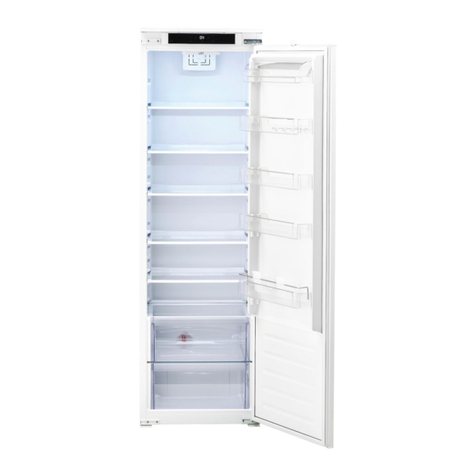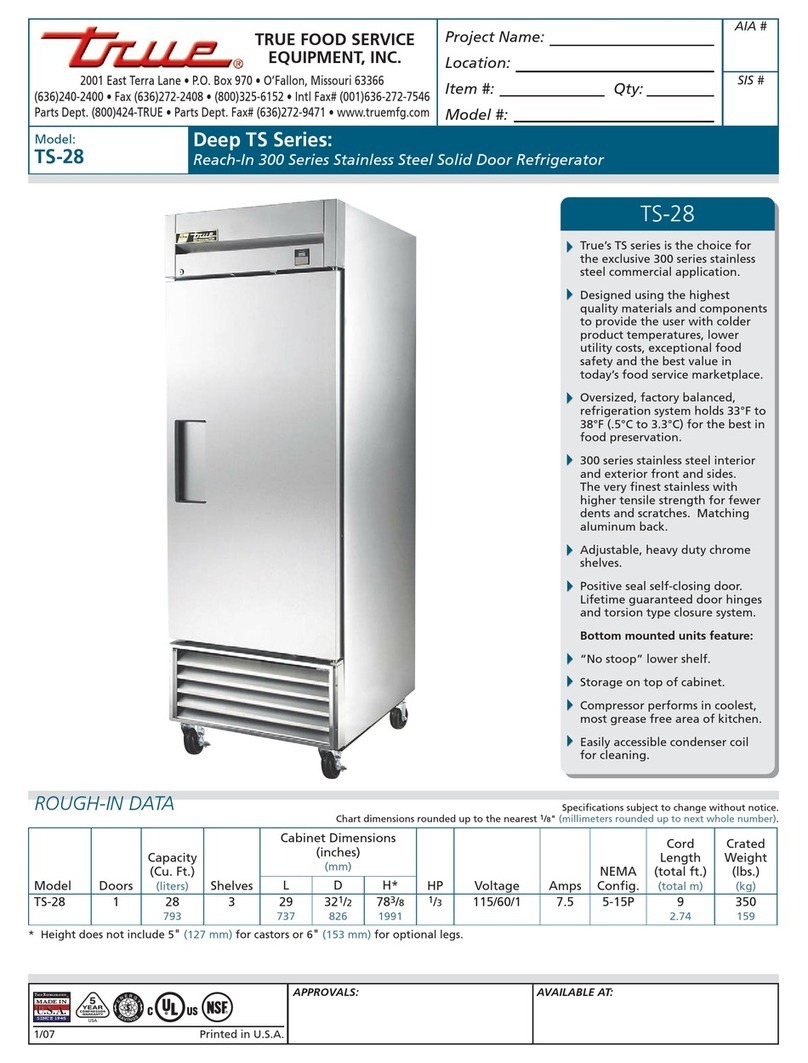2
IMPORTANT AFETY INFORMATION.
READ ALL IN TRUCTION BEFORE U ING.
afety Instructions
Operating Instructions
Troubleshooting Tips
Consumer upport
Installation Instructions
DANGER! RI K OF CHILD ENTRAPMENT
Use this appliance only fo its intended pu pose as desc ibed
in this Owne ’s Manual.
WARNING!
■This refrigerator must be
properly installed and located in
accordance with the Installation
Instructions before it is used.
■Do not allow children to climb,
stand or hang on the shelves
in the refrigerator. They could
damage the refrigerator and
seriously injure themselves.
■Do not store or use gasoline
or other flammable vapors
and liquids in the vicinity
of this or any other appliance.
■Keep fingers out of the “pinch
point” areas; clearances between
the doors and cabinet are
necessarily small. Be careful
closing doors when children
are in the area.
■Unplug the refrigerator before
cleaning and making repairs.
■GE does not support any
servicing of the refrigerator.
■Turning the temperature control
dial to the OFF position stops
cooling but does not shut off
power to the refrigerator.
When using elect ical appliances, basic safety p ecautions
should be followed, including the following:
SAFETY PRECAUTIONS
Child entrapment and suffocation
are not problems of the past.
Junked or abandoned refrigerators
are still dangerous… even if
they will sit for “just a few days.”
If you are getting rid of your
old refrigerator, please follow
the instructions below to help
prevent accidents.
Before You Throw Away Your
Old Refrigerator or Freezer:
■Take off the doors.
■Leave the shelves in place so
that children may not easily
climb inside.
Refrigerants
All refrigeration products contain
refrigerants, which under federal
law must be removed prior to
product disposal. If you are getting
rid of an old refrigeration product,
check with the company handling
the disposal about what to do.
PROPER DISPOSAL OF THE REFRIGERATOR
